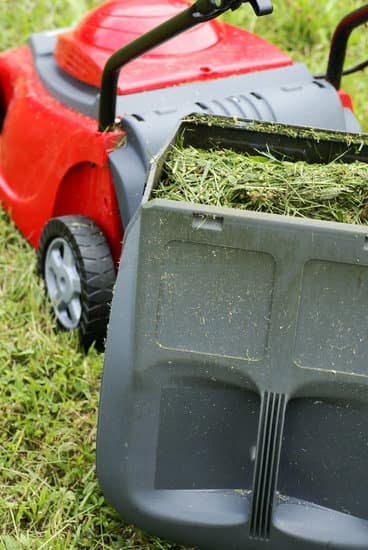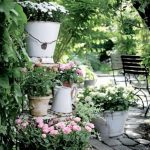Looking for narrow home landscaping ideas? Landscaping for narrow homes presents unique challenges, but also abundant opportunities for creating beautiful, functional outdoor spaces. Maximizing every inch of space and creating a visually appealing environment are key factors in designing the perfect landscape for a narrow property.
When it comes to landscaping for narrow homes, vertical space is a valuable asset. Utilizing elements such as trellises, hanging planters, and wall-mounted gardens can help maximize the available space and add visual interest to the landscape. Choosing plants with compact growth habits is crucial in ensuring that they thrive in small spaces without overcrowding or overshadowing other vegetation.
Aside from choosing the right plants, creating distinct functional zones within a narrow landscape is essential. This can include areas for dining, lounging, and gardening. By incorporating smart pathways and creative paving materials, you can add functionality and visual interest while creating an illusion of more space. Lastly, don’t underestimate the impact of color and texture in adding depth and interest to your narrow landscape.
Utilizing Vertical Space
When it comes to landscaping for narrow homes, maximizing space is essential. One effective way to do this is by utilizing vertical space in the outdoor environment. Vertical gardening not only adds visual interest but also provides a practical solution for planting in limited areas. Here are some tips for making the most of vertical space in narrow home landscaping:
- Install trellises or arbors to support climbing plants such as vines, jasmine, or clematis.
- Use hanging planters or baskets to add greenery without taking up valuable ground space.
- Create a wall-mounted garden by installing shelves or containers on exterior walls for growing herbs, succulents, or small flowers.
Vertical gardening offers numerous benefits for narrow landscapes. Not only does it add depth and dimension to the outdoor area, but it also allows homeowners to enjoy the beauty of nature within a limited space.
Choosing the right plants for vertical gardening is crucial. It’s important to select species that are well-suited for narrow spaces and can thrive in a vertical environment. Some options include ivy, ferns, and air plants. Additionally, incorporating hanging pots with trailing plants can create a cascading effect that brings visual interest to any vertical surface.
By embracing the concept of vertical gardening, homeowners can transform their narrow outdoor spaces into lush and inviting environments that are both functional and visually appealing.
Optimal Plant Selection
When it comes to landscaping narrow homes, selecting the right plants is essential for creating a visually appealing and functional outdoor space. Optimal plant selection plays a significant role in maximizing the available space while ensuring that the landscape remains low maintenance and thrives in a confined area. When choosing plants for narrow landscapes, it’s crucial to consider their growth habits, size, and maintenance requirements.
Compact and narrow plants are ideal for narrow landscapes as they can help create the illusion of more space while still providing beautiful greenery. Examples of suitable plants include dwarf shrubs, columnar trees, ornamental grasses, and creeping ground covers. These types of plants not only add visual interest but also contribute to creating distinct zones within the narrow outdoor space.
In addition to considering plant size and growth habits, it’s important to select plants that are well-suited to the specific conditions of the narrow landscape. This includes taking into account factors such as sunlight exposure, soil quality, and water availability. By choosing plants that thrive in these conditions, homeowners can ensure optimal growth and minimize the need for extensive maintenance. Ultimately, optimal plant selection is key to creating a lush and thriving landscape in spite of limited space.
Creating Functional Zones
One of the key challenges in landscaping for narrow homes is maximizing the functionality of the outdoor space. Creating distinct zones within a narrow landscape can not only optimize the usability of the area but also contribute to its visual appeal. By strategically defining areas for dining, lounging, and gardening, homeowners can make the most of their limited outdoor space.
Designing Distinct Areas
One effective strategy for creating functional zones in a narrow landscape is to use different materials or features to define each area. For example, using wooden decking for a dining area, artificial grass for a lounging space, and raised garden beds for gardening can help visually separate the zones. This approach adds diversity to the landscape while clearly delineating the purposes of each section.
Maximizing Usability
Incorporating multi-functional elements can also enhance the usability of a narrow outdoor space. For instance, incorporating built-in seating with hidden storage or adding folding furniture that can be easily stored when not in use can help maximize space while providing flexibility for different activities. Additionally, utilizing vertical elements such as wall-mounted tables or foldable shelves can further optimize functionality in a narrow landscape.
Strategic placement of plants and greenery can also contribute to defining functional zones in a narrow home landscaping design. Using tall grasses or shrubs as natural screens to create privacy for dining or lounging areas, and incorporating low-maintenance ground cover plants around garden beds can further enhance the distinction between different zones within a limited outdoor space. These creative landscaping ideas not only maximize functionality but also add visual interest and depth to narrow landscapes.
Smart Pathways and Paving
Creating functional and visually appealing pathways in narrow landscapes is crucial for maximizing usability and creating an inviting outdoor environment. Here are some smart pathway and paving ideas to consider:
- Use narrow pathways: Opt for slim stone or gravel pathways that meander through the landscape, allowing for easy navigation without taking up too much space. Narrow paths can create the illusion of a larger area and guide visitors through the garden.
- Stepping stones: Introduce stepping stones strategically placed within the landscaping to provide a clear path while adding visual interest. This approach can also help prevent soil compaction and provide a charming, natural feel to the space.
- Creative paving materials: Consider using creative materials such as recycled bricks, mosaic tiles, or even reclaimed wood to add unique texture and personality to your pathways. These unconventional choices can make a bold statement in a narrow landscape.
Designing pathways in narrow home landscaping should also aim to create an illusion of space through thoughtful planning and execution:
- Curving paths: Incorporating curved rather than straight pathways can give the impression of a larger space by obscuring what lies beyond, leading visitors on a more captivating journey through the garden.
- Strategic lighting: Highlighting the pathway with subtle lighting fixtures can not only enhance safety during evening hours but also create depth and elongate the perceived length of the walkway, making it seem more spacious.
- Vertical elements: Incorporating vertical elements like trellises or tall grasses along the sides of pathways can draw the eye upward, emphasizing height rather than width to make the space feel less constricted.
By considering these imaginative ideas for smart pathways and paving solutions, homeowners with narrow landscapes can transform their outdoor spaces into functional and visually stunning retreats that make optimal use of limited room.
Using Color and Texture
When it comes to narrow home landscaping ideas, using color and texture effectively can make a significant impact on the overall look and feel of the outdoor space. By incorporating the right combination of colors and textures, you can create visual interest, as well as the illusion of depth and space within a narrow landscape.
Incorporating Color
One important aspect of utilizing color in narrow landscaping is to create a cohesive and harmonious color palette. When choosing plants, flowers, and hardscaping materials, consider selecting a mix of complementary colors that work well together. Additionally, incorporating pops of bold or vibrant colors can help draw the eye and add visual excitement to the space.
Incorporating various shades of green in plant selections can also bring a sense of calm and tranquility to the narrow landscape, creating a lush and inviting atmosphere. Using foliage with different leaf shapes and textures can further enhance the visual interest while adding depth to the outdoor space.
Adding Texture
Texture plays a crucial role in adding dimension to a narrow landscape. Mixing different types of foliage with varying textures – such as soft, delicate leaves alongside coarse or spiky ones – can create an engaging contrast that adds depth to the overall design. Incorporating hardscaping elements like gravel pathways or stone walls can also contribute to textural variety.
In addition to plants and hardscaping materials, considering other elements such as decorative pots, sculptures, or water features can further enhance the texture within a small outdoor space. Choosing materials with different finishes – such as matte, glossy, or rough surfaces – can also contribute to the tactile experience in the garden area.
Ultimately, by carefully considering color combinations and textural variety in your landscaping design, you can create an inviting and visually appealing environment that maximizes the available space while making a lasting impression.
Vertical Gardens and Green Walls
When working with a narrow outdoor space, it’s important to make the most of every inch of available area. Vertical gardens and green walls are an excellent way to add greenery and visual interest without taking up valuable floor space. These features can be created using a variety of techniques, including wall-mounted containers, trellises, and modular planting systems.
One innovative option for vertical gardening is the use of hydroponic or aeroponic systems, which allow plants to grow vertically without the need for soil. This can be particularly beneficial in narrow landscapes where traditional gardening space is limited. Additionally, green walls can be used to create privacy screens, reduce noise pollution, and improve air quality in small outdoor areas.
When designing a vertical garden or green wall for a narrow space, it’s important to carefully select plants that will thrive in this unique environment. Consider factors such as light exposure, moisture levels, and mature plant size when choosing species for your vertical garden. It’s also worth exploring the use of native or drought-tolerant plants, which often require less maintenance and watering than traditional options.
Ultimately, incorporating a vertical garden or green wall into a narrow landscape can add vibrancy and life to an otherwise restricted space. With careful planning and selection of appropriate plant species, these features have the potential to transform a narrow outdoor area into a lush and inviting oasis.
| Benefits of Vertical Gardens | Considerations for Plant Selection |
|---|---|
| Creates privacy screens | Light exposure |
| Reduces noise pollution | Moisture levels |
| Improves air quality | Mature plant size |
Lighting and Ambiance
In conclusion, landscaping for narrow homes presents unique challenges, but with the right approach, it can also offer exciting opportunities to create a visually striking and functional outdoor space. By utilizing vertical elements such as trellises, wall-mounted gardens, and hanging planters, homeowners can maximize their space and add a touch of greenery to their surroundings. Additionally, choosing compact and narrow plants that thrive in small spaces is essential for maintaining a well-kept and vibrant landscape.
Creating distinct zones for dining, lounging, and gardening within a narrow landscape can provide structure and functionality. Pathways and paving materials should be strategically designed to enhance usability while creating the illusion of space in narrow areas. Incorporating elements such as color, texture, and vertical gardens not only adds visual appeal but also helps in making the most out of limited outdoor space.
Finally, lighting and ambiance play a crucial role in transforming narrow outdoor spaces into cozy and inviting environments. By incorporating lighting fixtures, candles, or other elements to enhance the atmosphere, homeowners can enjoy their outdoor space even after dark. Ultimately, with careful planning and creative design choices, landscaping for narrow homes can result in stunning outdoor areas that are both practical and visually appealing.
Frequently Asked Questions
How Do You Landscape a Long Narrow Area?
When landscaping a long narrow area, it’s important to create a sense of balance and proportion. Using tall vertical elements like trees or trellises can help draw the eye upward and make the space feel less confined.
Incorporating winding pathways and curved borders can also add visual interest and create the illusion of a larger area. Planting in layers with low-growing plants in the front, medium-height shrubs in the middle, and taller plants at the back can also help maximize space and create a sense of depth.
What Is the Least Expensive Backyard Landscaping?
The least expensive backyard landscaping often involves using native plants that are well-suited to the local climate and require minimal maintenance. Opting for perennial plants over annuals means you won’t have to replant every year, saving on costs in the long run.
Consider using mulch or gravel instead of grass to reduce mowing and watering needs. DIY projects like building your own flower beds or creating a simple patio with pavers can also save on labor costs.
What Is the Cheapest Landscape Fill?
When looking for the cheapest landscape fill, consider options like mulch, compost, or wood chips that are readily available at low cost from local garden centers or municipal facilities. These materials not only help improve soil quality but also provide an affordable way to fill in bare spots in your landscape without breaking the bank.
Another option could be sourcing free materials such as fallen leaves or lawn clippings from your own yard or from neighbors for natural composting and filling needs.

Welcome to my gardening blog! I am passionate about plants and enjoy sharing my knowledge and experiences with others. In this blog, I will write about everything related to gardening, from tips on how to get started to updates on my own garden projects.





